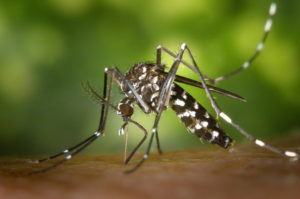
Although they are tiny, mosquitoes can be very pestilential creatures. We are all cognizant of the dangers of the Zika virus and the issues they are having on our human population, but there here are additional mosquito-borne illnesses in addition to Zika. Some of them are more lethal than the others. Below is a list of the most lethal diseases that mosquitoes can carry?
Zika Virus
Primarily caused by Aedes mosquitoes, Zika virus is a disease first identified in 1947 in Uganda. A mild illness, Zika virus may cause viral fever. Furthermore, an infected person may suffer from headache, aches, and skin rashes. Unfortunately, there is no precautionary antidote for this disease so the only way you can protect yourself from Zika virus is staying clear of mosquito bites. Pregnant women and infants are most affected by this disease.
Dengue fever
Without a shadow of a doubt, dengue fever is one of the most lethal illnesses caused by mosquitoes. People living in tropical and subtropical climates are the ones most prone to this disease. Similar to the Zika virus, dengue fever is primarily caused by Aedes mosquitoes. By multiplying in our body’s cells, dengue mosquitoes cause rashes, joints pain, headache, and high fever. However, these conditions are just the initial symptoms of the disease. Dengue can also cause nausea, vomiting, bleeding and even death. Generally, infected people take acetaminophen to treat dengue fever. However, to date, there are no specific medications or treatments for this ailment.
Malaria
Caused by female Anopheles, malaria occurs when a human is bit by a mosquito and Plasmodium vivax is transferred into the bloodstream. Malaria can travel from the bloodstream into the liver and disrupt the normal functioning of the liver. Malaria can also cause headaches, fever, sweating, severe-flu and chills. Although this illness has been virtually eliminated in the United States, it continues to haunt the people in Africa and South America.
West Nile
West Nile was first discovered in 1999. Caused by culex mosquitoes, West Nile primarily affects birds and animals. However, there are also cases of humans being affected by this disease. In fact, many human fatalities caused by West Nile have been reported to date. West Nile is a lethal disease, as it can damage brain tissues and cause coma, convulsions and even death.



